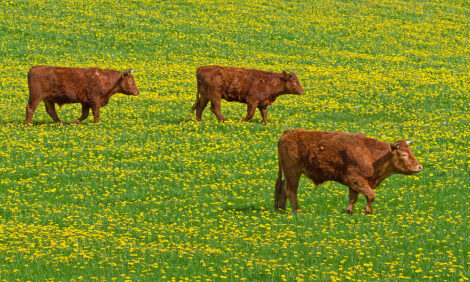



The Role of Farms and Forests in Changing Climate
GENERAL - The FAO has said that the problem of global warming from greenhouse gases calls for a stronger involvement of agriculture and farming communities, as well as forestry and forest users in reducing greenhouse gas emissions."Agriculture and deforestation are major contributors to climate change, but by the same token farmers and forest users could become key players in reducing greenhouse gas emissions," said Alexander Müller, FAO Assistant Director-General.
Co-benefits
"Unlocking the potential of agriculture and forestry for climate change mitigation requires financing mechanisms targeting farmers and foresters around the globe, particularly small-scale land-users in developing countries," he added.
"These mechanisms should give priority to emission-reducing measures that have ‘co-benefits' for food and energy security, poverty reduction, sustainable use of natural resources. Forestry and agriculture offer many opportunities for such ‘win-win' measures," Müller said.
Greenhouse gas emissions from forestry and agriculture contribute over 30 percent of the current annual total emissions (deforestation and forest degradation 17.4 percent, agriculture 13.5 percent). Agriculture is responsible for 50 percent of methane (livestock and rice) and more than 75 percent of nitrous oxide (largely from fertilizer application) emitted annually by human activities.
"Climate change will affect the lives and livelihoods of farmers, fishers and forest users in developing countries, many of whom are already facing difficulties in earning a sufficient income and feeding their families," Müller said.
Growing risks
Rural communities, particularly those living in already environmentally fragile areas, face an immediate and ever-growing risk of increased crop failure, loss of livestock, and reduced availability of marine, aquaculture and forest products. Humans, plants, livestock and fish will be exposed to new pests and diseases.
"Climate change has the potential to increase hunger particularly in the poorest countries. We have to act now if we want to avoid a humanitarian disaster," said Alexander Müller.
Forty-percent of the land biomass is directly or indirectly managed by farmers, foresters or herders. "The international community can only win the global battle against climate change if we succeed in mobilizing the potential of these land users to reduce greenhouse gas emissions and in sequestering carbon in soil and plants. We have to adapt to climate changes that are of greater intensity and rapidity than in the past," Müller said.
Using more efficient crop varieties, better control of wildfires, improved natural resource management, biogas capture from animal manure, restoring land by controlled grazing, organic soil management, conservation agriculture, and agro-forestry systems are promising measures that should be more vigorously promoted to reduce green house gases from agriculture and forestry and enhance adaptation to climate changes.
FAO supports Pacific island countries in integrating climate change adaptation and mitigation strategies into agricultural, fisheries, forest management and national food security plans. In Morocco and other developing countries, FAO assists in assessing the impacts of climate change on agriculture and food security. In Bangladesh and Nepal, FAO enhances national and local capacities in agriculture, livestock, forestry and fisheries for disaster risk reduction, climate risk management and climate change adaptation, including through linking sectoral support to community-based action.
TheCattleSite News Desk


